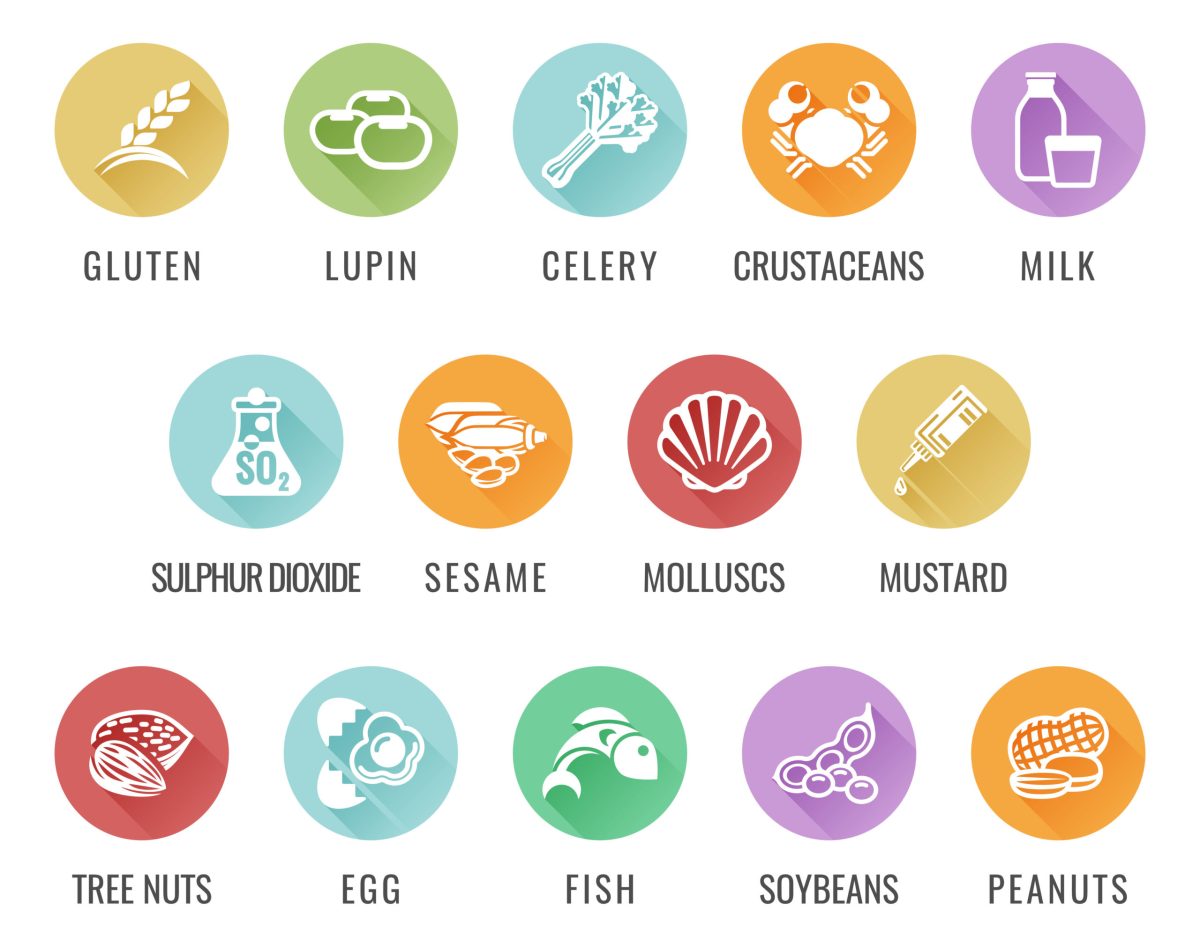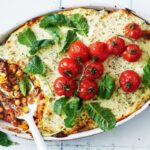Embark on a culinary journey around the globe, savoring the vibrant flavors of diverse cuisines without compromising on dietary needs. This exploration delves into the art of creating allergen-free versions of beloved international dishes, showcasing recipes that are both delicious and inclusive. Imagine the rich tapestry of colors, textures, and aromas – from the fiery spice of a Moroccan tagine to the delicate sweetness of a Japanese mochi – all meticulously crafted to be free from common allergens like gluten, dairy, nuts, and soy.
We’ll uncover the secrets to adapting traditional recipes, mastering allergen-free cooking techniques, and sourcing the best ingredients. Through detailed recipes, insightful tips, and stunning visuals, this guide empowers you to create globally inspired meals that are not only safe but also incredibly flavorful and satisfying. Prepare to expand your culinary horizons and delight your taste buds with a world of allergen-free possibilities.
Allergen-Free Cooking Techniques and Tips

Mastering allergen-free cooking requires understanding techniques that preserve both flavor and texture while ensuring safety. This involves careful ingredient selection and mindful preparation methods to avoid cross-contamination. The following techniques and tips will empower you to create delicious and safe global dishes, free from common allergens.
Essential Allergen-Free Cooking Techniques
Employing specific cooking methods enhances the taste and texture of allergen-free meals. These techniques minimize the risk of unwanted flavors or textures often associated with substitutions. Careful execution is key to achieving optimal results.
- Sous Vide Cooking: This method involves sealing food in a bag and cooking it in a precisely controlled water bath. The consistent temperature ensures even cooking, resulting in tender meats and perfectly cooked vegetables. For example, sous vide cooking can create incredibly tender and juicy chicken breasts for an allergen-free satay, eliminating the risk of dryness often associated with allergen-free alternatives. The precise temperature control also helps to prevent overcooking, preserving the natural flavors of the ingredients.
- Blanching: Briefly cooking food in boiling water then immediately plunging it into ice water stops the cooking process and retains vibrant colors and crisp textures. Blanching is ideal for vegetables in allergen-free stir-fries or curries, preserving their nutrients and preventing them from becoming mushy. Imagine vibrant green broccoli florets in a delicious Thai-inspired coconut curry (ensure coconut milk is allergen-free and certified). The blanching ensures they retain their bright color and pleasing crunch.
- Roasting: Roasting brings out the natural sweetness and enhances the flavors of vegetables and meats. High heat caramelizes sugars, creating a delicious crust. Roasting root vegetables like sweet potatoes and carrots for an allergen-free Moroccan tagine intensifies their natural sweetness, adding depth to the dish. The caramelization creates a delightful contrast to the savory spices.
- Steaming: Steaming is a gentle cooking method that preserves nutrients and texture. It’s perfect for delicate vegetables and fish. Steaming delicate fish fillets for an allergen-free ceviche ensures they remain moist and flaky. The gentle heat preserves the delicate texture and allows the flavors of the marinade to penetrate without overcooking.
- Dehydrating: Removing moisture from food through dehydration concentrates flavors and creates long-lasting snacks. Dehydrating fruits and vegetables for allergen-free trail mixes or snacks is a great way to preserve their flavor and create a convenient, healthy option. Imagine crunchy, sweet apple chips, free from common allergens, perfect for a hiking snack.
Avoiding Cross-Contamination in Shared Kitchens
Preparing allergen-free meals in a shared kitchen environment necessitates meticulous precautions to prevent cross-contamination. These steps are crucial for maintaining the integrity of allergen-free dishes.
- Dedicated Utensils and Surfaces: Use separate cutting boards, knives, spoons, and other utensils exclusively for allergen-free foods. Designate a specific area on the countertop or stovetop for allergen-free preparation.
- Thorough Cleaning: Clean all surfaces and utensils thoroughly with hot, soapy water before and after preparing allergen-free meals. Pay particular attention to areas where allergens might linger, such as cutting boards and countertops. A final rinse with hot water ensures the removal of any residual allergen particles.
- Careful Ingredient Storage: Store allergen-free ingredients separately from those containing allergens. Use clearly labeled containers to avoid accidental cross-contamination. For instance, store gluten-free flour in a sealed container distinct from wheat flour, preventing any possible mixing.
Ingredient Sourcing and Substitutions for Allergen-Free Cooking
Navigating the world of allergen-free cooking often requires creative substitutions to maintain both flavor and nutritional value. Understanding the properties of readily available allergen-free ingredients and knowing where to source them are key to success. This section explores several common allergen substitutes, highlighting their nutritional benefits and potential drawbacks.
Choosing the right substitutes is crucial for creating delicious and healthy allergen-free meals. It’s important to consider both the flavor profile and the nutritional impact of each substitute. Careful ingredient selection will ensure your dishes are not only safe but also enjoyable and nourishing.
Allergen-Free Ingredient Substitutes
The following list details five readily available allergen-free ingredients that can successfully replace common allergens in many recipes. Each entry considers both the nutritional advantages and potential limitations of the substitution.
- Substitute for Dairy: Coconut milk. This creamy, plant-based alternative offers a rich texture and mild sweetness, making it suitable for many dishes. Nutritional benefits include healthy fats and electrolytes. However, it’s higher in saturated fat than some other alternatives, and it might not be ideal for those sensitive to coconut.
- Substitute for Gluten: Almond flour. This finely ground flour provides a slightly nutty flavor and a tender crumb. It’s a good source of vitamin E and healthy fats. However, it’s lower in protein than wheat flour, and recipes often require adjustments to achieve the desired texture. It’s also higher in fat than some other gluten-free flours.
- Substitute for Eggs: Chia seeds. When mixed with water, chia seeds form a gel-like substance that acts as a binder in baking. They are a good source of fiber and omega-3 fatty acids. However, they impart a slightly earthy flavor that might not be suitable for all recipes. The texture can also be slightly different from egg-based recipes.
- Substitute for Soy: Sunflower seeds. These seeds provide a pleasant nutty flavor and a good source of healthy fats, vitamin E, and selenium. They can be used in various ways, including as a topping or in sauces. However, they are relatively high in calories and should be consumed in moderation. Their flavor may not be a perfect match for soy in all dishes.
- Substitute for Nuts (in some cases): Sunflower seed butter. While not a perfect replacement for all nut butters, sunflower seed butter offers a similar creamy texture and a mild, nutty flavor. It’s a good source of vitamin E and healthy fats. However, it may not be suitable for those with severe nut allergies due to potential cross-contamination during processing. It also has a slightly different flavor profile than many nut butters.
Resource Guide for Allergen-Free Ingredients
A comprehensive resource guide would include a curated list of online retailers specializing in allergen-free products. The guide would also feature information on local farmers’ markets and specialty stores that carry a wide selection of allergen-free ingredients. Detailed descriptions of each vendor, including their certifications and customer reviews, would be provided to ensure consumer confidence in product quality and safety. The guide would also provide guidance on reading food labels to identify potential cross-contamination risks. Finally, it would include contact information for relevant consumer organizations and allergy support groups.
From mastering allergen-free substitutions to understanding cross-contamination prevention, this culinary adventure has equipped you with the knowledge and confidence to create globally inspired, allergen-free meals. The journey through diverse cuisines, each dish a vibrant testament to the possibilities of inclusive cooking, culminates in a celebration of flavor and dietary freedom. The rich tapestry of textures, colors, and aromas, once seemingly out of reach, now beckons you to explore and recreate these delicious, allergen-free global dishes in your own kitchen. The world of flavor awaits – explore, adapt, and enjoy!
Question & Answer Hub
What are some common allergen-free substitutes for dairy?
Common dairy-free substitutes include plant-based milks (almond, soy, oat), coconut cream, cashew cream, and nutritional yeast for cheesy flavors.
How can I ensure my kitchen is safe for preparing allergen-free meals?
Designate separate cutting boards, utensils, and cooking surfaces for allergen-free foods. Thoroughly clean all surfaces before and after preparing allergen-containing foods. Read labels carefully to avoid cross-contamination from unexpected allergens.
Are all allergen-free substitutes nutritionally equivalent to their allergenic counterparts?
Not always. Some substitutes may have different nutritional profiles. For example, some plant-based milks may be lower in protein than dairy milk. It’s important to check nutritional labels and consider supplementation if necessary.
Where can I find reliable information on allergen-free cooking?
Consult reputable websites of allergy organizations, registered dietitians, and allergy-focused cookbooks and blogs. Always verify information from multiple sources.


